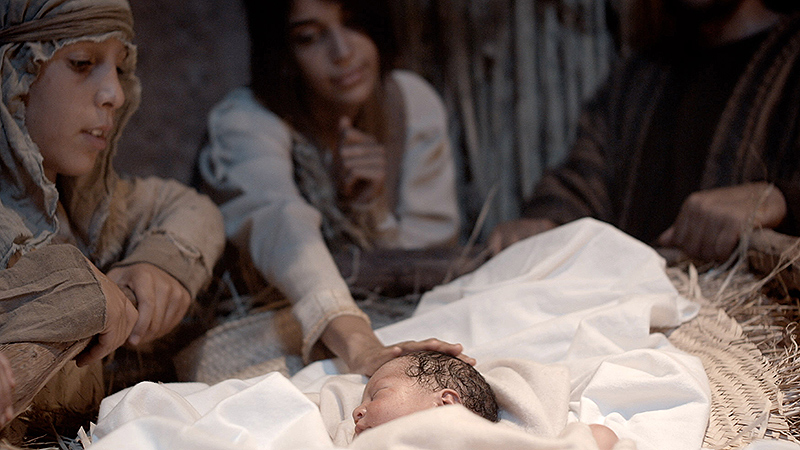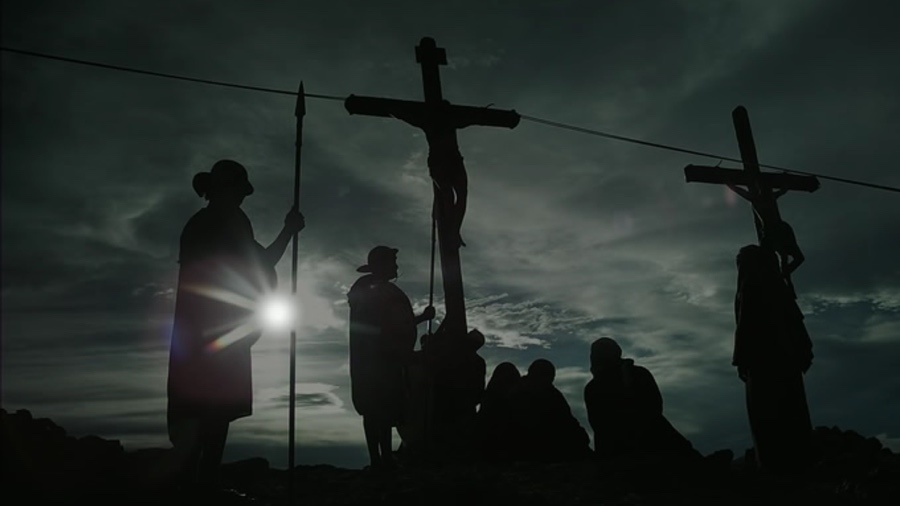God showed how much he loved us by sending his one and only Son into the world so that we might have eternal life through him. This is real love — not that we loved God, but that he loved us and sent his Son as a sacrifice to take away our sins (1 John 4:9-10 NLT).
I'm not sure why important spiritual concepts often come with difficult-to-say, hard-to-understand, and highly-nuanced terms. However, deep inside, we know that Jesus' birth was more than a birthday — obviously trite sounding — of a poor kid from Nazareth. Jesus' birth was God's incarnation — a much more fitting and theologically deep concept — in human flesh: a little boy miraculously conceived in the womb of a woman by the Holy Spirit, delivered into the world like any normally born baby, and celebrated at his birth by his family, shepherds, angels, and magi from the East.
Jesus' birth was the collision of the gloriously divine and mundanely human. It was God entering our world through the birth canal of a woman. He was born with an umbilical cord that had to be cut, a body that had to be cleaned, and lungs that had to fill with air. As a baby, Jesus also needed to be protected as all newborns do. In his case, however, he also had to be protected from political enemies aided by religious scholars. So, Jesus' human parents had to escape to Egypt — the place where God had done some of his most dramatic miraculous work for his people. God entered the world he had made in Jesus only to be chased by a genocidal maniac. Along with incarnation, we must also add irony and vulnerability to the human mortality God chose to embrace in Jesus.

No wonder theologians had to come up with a difficult-to-understand term to describe how the Trinity functions in human reality! How else do you speak about the eternal God, the universe's Creator, entering the world of flesh and blood and time, as a baby? Rather than escape the mess that humanity had made of his creation, the one true and living God came to live in that mortal, messy, time-bound world. He came to experience all its beauty and pain. He came to inhabit its joy and sorrow. He came to touch its life and death. He came to experience what he could know as omnipotent God but felt compelled to experience as a mortal so we could be sure he knew what we feel and experience. Call it incarnation. Call it Christmas. Call it an impenetrable mystery. Most of all, call him Jesus!
If we are honest, we cannot understand, much less know, what it was like for God to witness Jesus and his thirty-three years of life on the very dirt he created. We don't know what it felt like to God the Father and Holy Spirit as Jesus was tortured, ridiculed, and humiliated on the cross. There is no way we can begin to imagine the hurt God chose to endure as Jesus walked the Via Dolorosa, the way of the cross, in obedience to the Divine will. We cannot begin to know, empathize, or imagine what it was like for God, except...
God gave us a window through which we could experience his cost: Mary. Mary, the mother of Jesus, is our window into the heart of God as he witnessed the life and death of Jesus the Son. While we can't know how it felt to be God and watch Jesus, we can begin to understand what it was like for Mary. She makes the emotions of the incarnation approachable for us.
We can be amazed with her as a mother in her joy at the birth of her firstborn. We can celebrate with her as she proudly watches her boy grow into a man, a good and righteous man. We can join her in bewilderment when her boy does great miracles and teaches amazing truth that opens hearts of people to understand God's will. We can feel her body shudder with revulsion and pain as she watches her son endure the beatings, lashings, torture, spittle, mockery, and barbarism of the Passion.
With Mary, we can see the hands of a baby wrap his fingers around those of his mother while knowing that those hands will be torn by nails. The tiny head that grew those first curly wisps of hair is now a matted mess of blood, hair, and skin under a crown of thorns. The back she had once rubbed when he was a tired little boy is now torn open by the scourging he had received. The heart that thrilled at the giggles of her little boy shattered with his words to his mother that direct her to the beloved disciple for her future care.

We cannot fully grasp the full theological depth and nuances of incarnation. However, we can begin to understand the love of God for us as we see Jesus' suffering through the broken heart of Mary. Yes, old Simeon was right, a sword would pierce Mary's heart just as Jesus' rejection broke the heart of God.
This year, as we look back through centuries of time into the manger of baby Jesus, let's remember what Mary saw. Let's look through Mary's eyes at the life of her son and remember all that God experienced from us to give his life to us. As agonizing as Jesus' journey through mortality was for God, Jesus coming was even more glorious than it was painful. Why? Because "it was a labor of love"!
To help you appreciate the incarnation through the eyes of Mary, we point you to two YouTube videos that are very different.
Whether or not you like country music, there's a touch of grace and probably a tear or two in for you when you experience Andrew Peterson's song, "A Labor of Love," the first YouTube video sung by Randy Travis with a video mashup of several video versions of the Jesus story:
The second video is the beautiful song, "Be Born in Me!" by Nichole Nordeman and sung by Francesca Battistelli.







Reader Comments
Archived Facebook Comments